If you’ve been following the three previous parts of this multi-part article, you’ve already done most of the work.
You’ve collected information on competitors — discovered how they do PPC and how much they spend on it, analyzed their websites and their blogs, learned how they get backlinks, etc.
You’ve looked at Google through the eyes of customers and chosen some relevant resources to place your links.
You can review all of this with the help of these articles:
- How to Create a Digital Marketing Strategy for a SaaS Company to Get Leads, Not Pain – Part 1
- How to Create a Digital Marketing Strategy for a SaaS Company to Get Leads, Not Pain – Part 2
- How to Create a Digital Marketing Strategy for a SaaS Company to Get Leads, Not Pain – Part 3
One last stage of our plan remains — to mix all these steps together.

Source: giphy.com
Step 4. Putting It All Together
Finally, when you have everything you need, it’s time to work out your action plan.
1. Clustering keywords
Clustering is a way of grouping keywords to help you distribute them correctly on the website.
Let’s describe it in short.
You can group keywords in several ways:
- Manually (this is difficult and time-consuming)
- Automatically (using software such as Key Collector and KeyAssort). This approach is quick, but the results are not always accurate.
- Do it automatically first and then correct the results manually. This is the most effective way.
How Can Kraftblick Help Your Software Company?

- We build marketing strategies from scratch and fix existing ones. More about that here.
- We provide consultations to company owners, directors, heads of marketing and sales, marketers. This is how we do it.
See you soon 🙂
For example, in the beginning you had lists of advertising and organic keywords. You’ve collected them at this stage with competitor analysis.
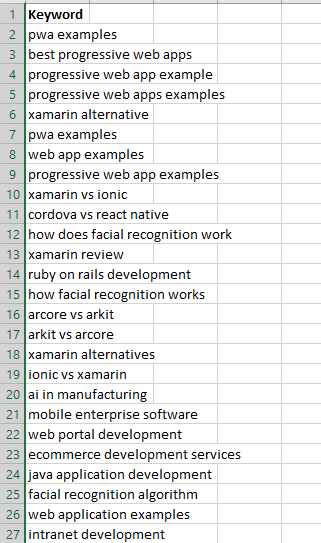
As the result, we will get groups of keywords:
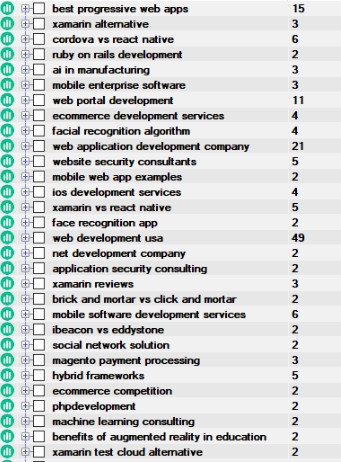
These groups can be used for several purposes:
- You can run Google ad campaigns using these keywords.
- You can prepare technical design specifications for the creation of new commercial pages.
Before proceeding, it’s a great idea to define the structure of the site.
2. Creating the perfect site structure
When you have a bunch of groups (there may be a hundred or even more), it’s easy to get lost and confused. Therefore, it’s good to design a visual structure to help guide you.
We usually use the Mindjet MindManager tool for doing this; it’s convenient for sketching a tree of pages.

2.a (Optional) Prioritize the work of creating new pages and posts
If your plans are ambitious but resources limited, it’s reasonable to prioritize the work of creating new pages and posts.
There are several ways to do this, so let’s talk about one of the most effective. It works well if we create commercial pages and blog posts with a focus on SEO promotion.
To do this, you should export the frequency parameters (i.e., Volume) from Ahrefs or Google Keyword Planner for each query to your list of grouped keywords.
Also, export the data related to Keyword Difficulty (KD) from Ahrefs.
Keyword Difficulty is a relative metric that shows how difficult it will be to get to the top of the search results with a particular keyword.
The final result will look something like this:

Now you can calculate the total number of requests as well as the average KD for each topic (the clusters that we formed above). The easiest way to do this is to use Excel’s pivot tables.
Then, you can choose topics that have the largest number of requests and the smallest average KD value.
This means that these topics get more traffic and will give you a higher opportunity to break through competitors to get this traffic.
3. Generating blog topics
Now you can look at the competitors’ blog topics, as well as good keywords, and compile your list of potential blog topics.
Compiling topics is a big issue in itself. You can find more information in these articles:
- 9 Techniques To Find Content Ideas for B2B Blog
- This is How We Create Content in Kraftblick
- 1 Easy Way to Create Great Blog Topics Like Neil Patel
4. Planning link building
4.a Cleaning the list of donor websites
At this stage, return to your lists in which you analyzed the sources of links for competitors and select the sites related to the “Guest Post” type.
The next step is to find contact information for the authors of these articles or the contact details of the site owners and send letters with a proposal to write guest posts.
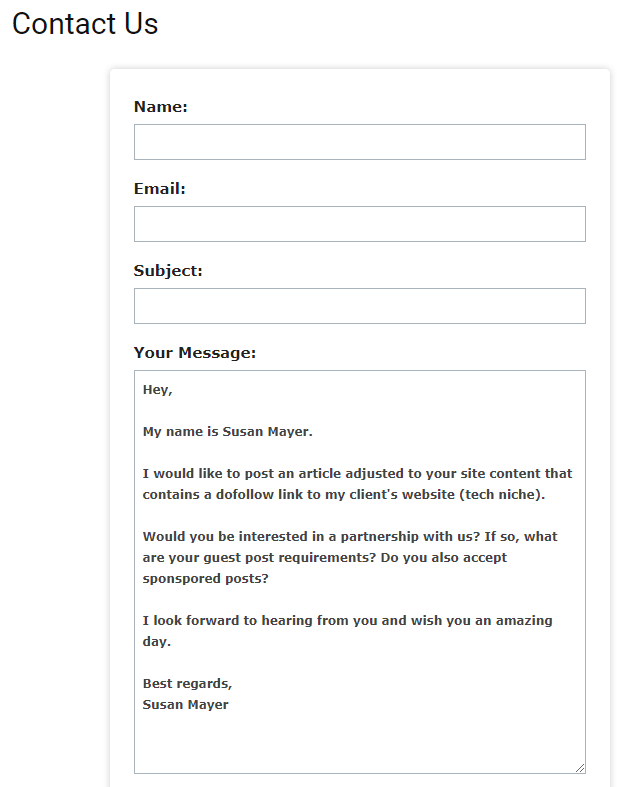
4.b Specifying the list of directories
Here, follow the same process. Select the relevant directories and set the task to get there.
4.c Compiling a list of other resources where you want to be placed
Analyze the remaining materials and select the most promising ones in order to get there.
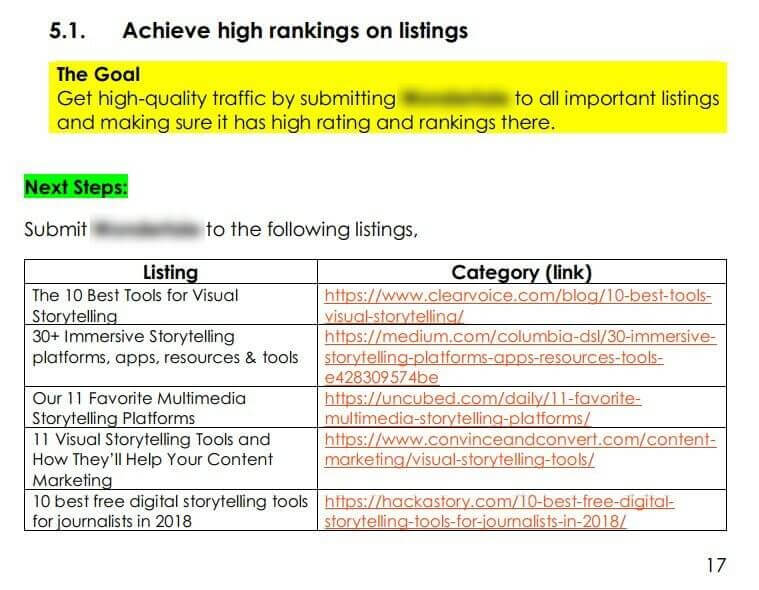
4.d Dealing with additional materials (list of competitors’ calls-to-action, etc.)
Depending on current needs you may want to analyze some additional parameters.
– If you are thinking what competitive advantages should be indicated on your landing page, take a look at competitors’ ads that you’ve exported.
– If you want to estimate the advertising budget, look at the budgets of your nearest competitors.
The result will be a document with a structure something like the following:
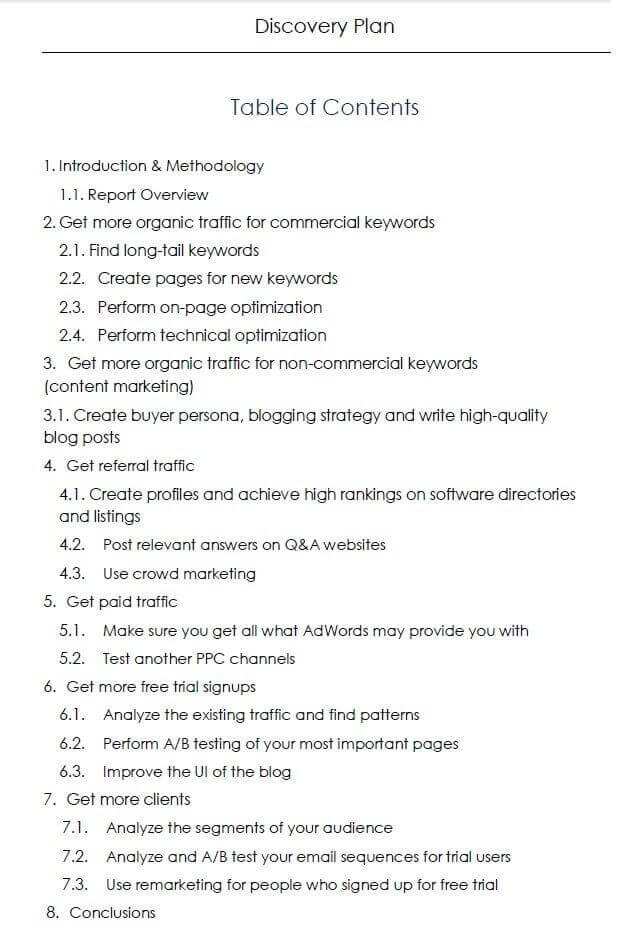
Finally, break this document into specific tasks:
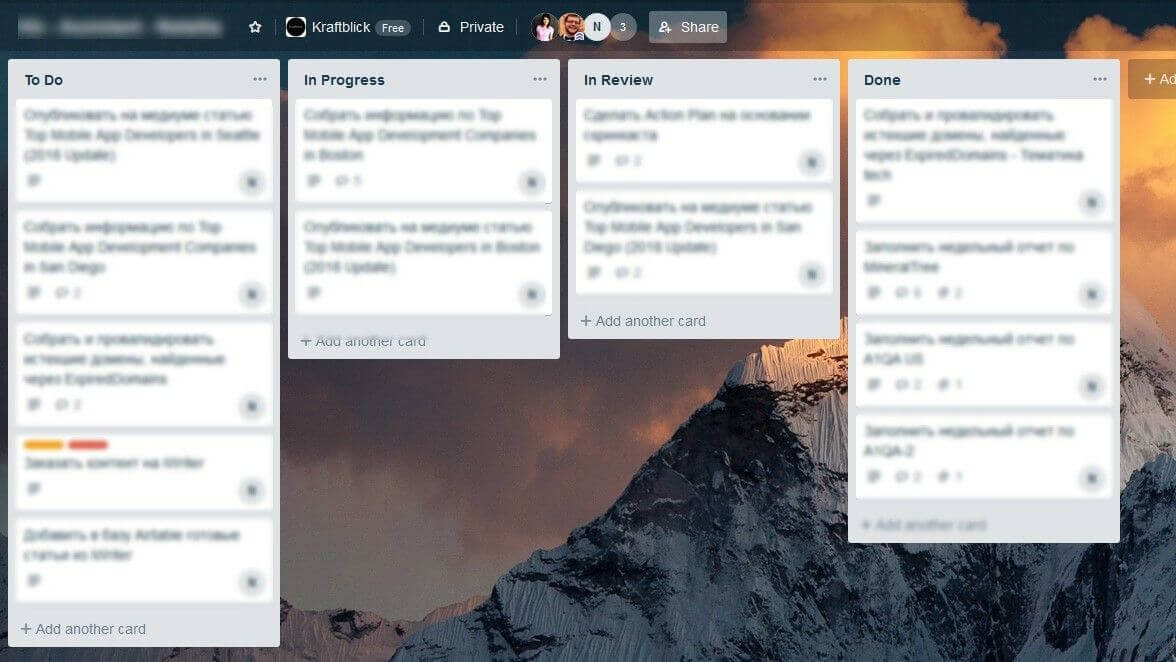
***
These instructions may seem complicated. We are prepared for the reality that 90% of readers won’t do what we have described.
Not because they consider our advice useless — just because this, that and the other prevent them from carrying through on our tips.
But if you want to succeed, don’t neglect our advice — this action plan is really very effective.
So, to keep from wasting the time you’ve spend reading this article, follow one of two options:
- Take at least a few of the steps that that best fit your company plans.
- Contact us, to learn more about our appropriate service called the Creation of a Discovery Plan.
Anyway, good luck!
